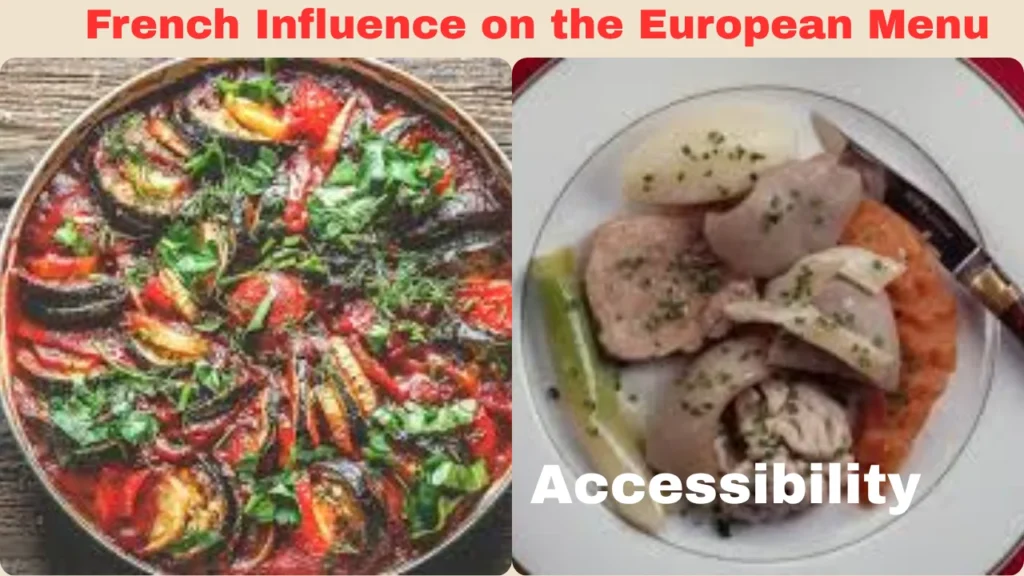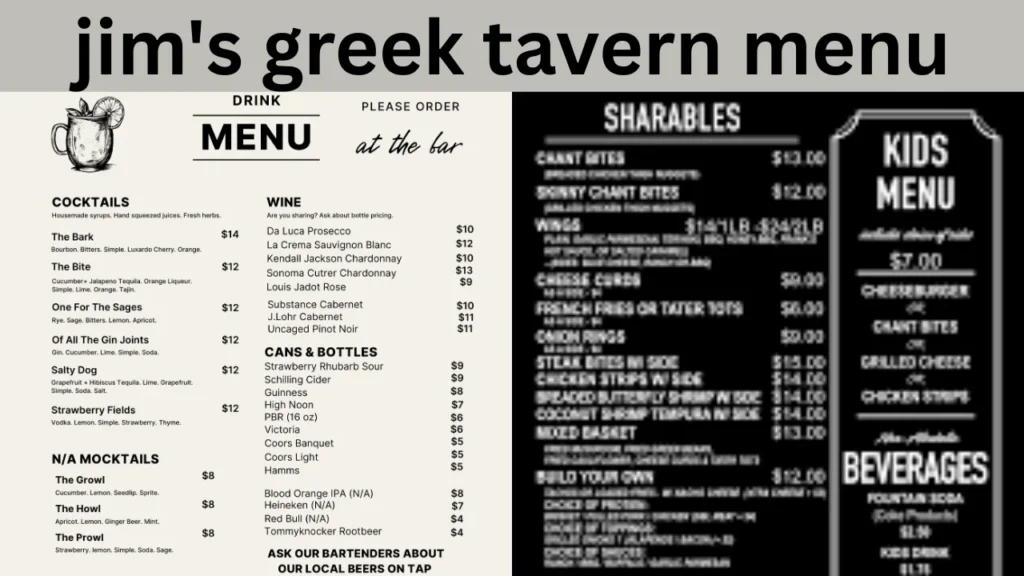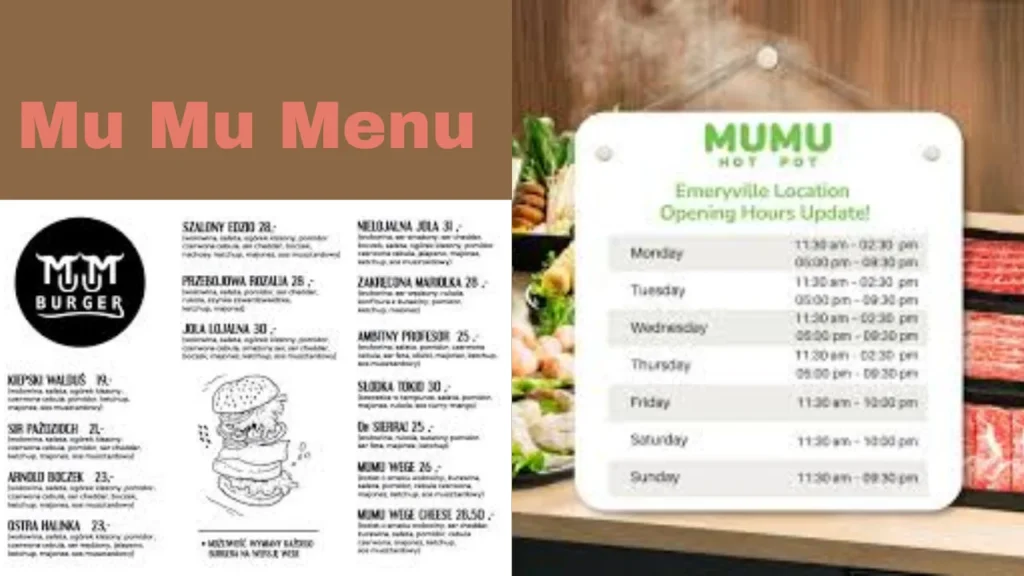The European menu is more than a list of dishes. It reflects centuries of culture, tradition, and fine dining. When you explore a European menu, you dive into a world of taste, structure, and history.
Each course has a purpose. From the light appetizer to the sweet dessert, everything has a place. This structure creates balance and variety in every meal. It turns a simple dinner into a full dining experience.
Also Read: Jim’s Greek Tavern Menu: A True Taste of Greece in Melbourne
What is a European Menu?
A European menu follows a traditional format. It is usually a multi-course meal. It starts light and ends with something sweet or relaxing. This style is common in France, Italy, Spain, Germany, and other European countries.
A typical meal includes appetizers, soups, a main course, and dessert. In many places, cheese or salad comes before dessert. The idea is to enjoy food slowly and with intention. Each dish builds on the last.
This menu style encourages smaller portions. But it also offers more variety. Diners taste a wide range of foods in one meal.
Course Breakdown of a European Menu
Here is a table that shows how a traditional European menu is structured. Each course plays a key role in the meal:
| Course | Description |
|---|---|
| Aperitif | A light drink to start, like wine or a cocktail |
| Hors d’oeuvre | A small appetizer like olives, bread, or spreads |
| Soup | A light broth or cream-based soup |
| Fish Course | A small portion of fish, sometimes with sauce |
| Main Course | A meat or vegetarian dish with sides |
| Salad or Vegetables | A refreshing course to cleanse the palate |
| Cheese Course | A plate of cheeses with bread or fruit |
| Dessert | Cake, tart, mousse, or ice cream |
| Coffee/Digestif | Espresso or liqueur to finish the meal |
This menu may vary in size. Some meals have only three courses. Others may offer six or more.
French Influence on the European Menu

France played a major role in shaping it. French chefs designed meals with structure and rhythm. Their menus included soups, entrees, roasts, and desserts.
They also introduced fine dining rules. These included using different silverware, wine pairings, and proper service. Today, many restaurants in Europe still follow these customs.
French cuisine focuses on sauces, slow cooking, and rich flavors. Dishes like Coq au Vin and Ratatouille often appear on menus.
Italian Menu Traditions
In Italy, it has its own style. Meals start with antipasto, followed by primo and secondo. The antipasto is usually cheese, olives, or meats. Primo includes pasta or risotto. Secondo features meat or seafood.
Italians also add contorno, or a side dish like vegetables. Dessert, or dolce, comes last. Many Italians finish with espresso or a digestif like grappa.
This menu reflects Italy’s love for food and family. Meals are social events that bring people together.
Spanish and Mediterranean Touches
Spain offers a different take on it. Meals often include tapas, which are small plates. Tapas can be served alone or before the main course.
Popular dishes include paella, seafood, and gazpacho. Spain also adds fruit and cheese before dessert. Wine is a big part of Spanish dining.
The Mediterranean diet influences this menu. It includes olive oil, fish, vegetables, and grains. The focus is on light, healthy ingredients.
German and Central European Influence
Germany and nearby countries add their own dishes to it. Meals may begin with cold meats or soup. The main course is often hearty, like schnitzel or sausages.
These menus may also include potatoes, dumplings, or cabbage. Cheese and desserts like strudel follow. Beer is often paired with these meals.
This menu style offers comfort and strong flavors. It reflects Central Europe’s colder climate and food culture.
Example of a European Menu in Practice
Let’s look at a sample European menu for a dinner. This shows how a real meal may look:
| Course | Dish Example |
|---|---|
| Aperitif | Sparkling wine |
| Appetizer | Bruschetta with tomato and basil |
| Soup | Cream of mushroom |
| Fish Course | Grilled salmon with lemon |
| Main Course | Roast lamb with potatoes |
| Salad | Mixed greens with vinaigrette |
| Cheese | Brie, cheddar, and grapes |
| Dessert | Tiramisu |
| Digestif | Espresso or limoncello |
This menu provides balance. Each dish has its own texture and taste. The whole meal feels complete.
Also Read: Mixue Menu: A Refreshing Experience of Ice Cream and Tea
Why the European Menu Matters Today
It remains popular in modern dining. It also helps people enjoy food slowly and mindfully.
This menu supports local and seasonal eating. Chefs can design dishes around fresh ingredients. It also gives room to explore new recipes and food trends.
Restaurants use this menu to offer a full experience. Each course builds the story of the meal. Diners leave feeling satisfied, not stuffed.
Creating a European Menu at Home
You can bring it to your table. Start with a theme. Choose a country like France, Italy, or Spain. Plan your courses ahead of time.
Keep portions small so guests can enjoy each dish. Serve wine or sparkling drinks. Play soft music and set the table nicely. This creates the feel of a restaurant meal at home.
Here is a quick table to help you plan:
| Step | Task |
|---|---|
| Choose Theme | Pick a country or region |
| Plan Courses | Select 3 to 5 dishes to serve |
| Prep Ahead | Cook what you can before guests arrive |
| Serve Slowly | Give time between courses |
| Enjoy Together | Focus on sharing food and stories |
This is a great way to celebrate or host friends.
How Restaurants Use the European Menu
Fine dining restaurants often follow it. They design each course to highlight a skill or ingredient. This creates a full story for the diner.
Menus may be fixed or offer choices. Some places let you pick one from each category. Others give a set tasting menu. These often include wine pairings too.
Chefs love the freedom of multiple courses. They can show off flavors and styles. Diners get a rich and satisfying experience.
The Role of Wine in the European Menu
Wine is a big part of it. It pairs with almost every course. In France and Italy, wine enhances the taste of food.
Light wines go with fish and soups. Red wines pair with meats and rich sauces. Sweet wines or liqueurs match desserts.
Choosing the right wine is an art. Many restaurants have a sommelier to help. This makes the dining experience even better.
Modern Changes to the European Menu
Today’s European menu is changing. Many places now serve vegetarian and vegan dishes. There’s also more focus on local food and health.
Menus may include gluten-free or allergy-safe options. Portions are getting lighter too. But the core structure stays the same. People still enjoy the flow from starter to dessert.
Some modern menus mix old and new. They might add global flavors like Asian spices. Others return to classic recipes with simple ingredients.
Benefits of the European Menu
There are many reasons to love it. It creates balance and variety. It encourages people to eat slowly and enjoy each bite.
Meals become social events. They offer time to talk, laugh, and relax. The menu also gives chefs a creative outlet.
Benefits include:
- Better digestion with small portions
- Enjoying a wide range of flavors
- Focusing on quality, not just quantity
- Learning about culture through food
This menu connects people with food and with each other.
Also Read: Hillarys Beach Club Menu: Coastal Flavors with a Modern Twist
Final Thoughts
The European menu is a journey through taste and tradition. From soup to dessert, it tells a story. Each course is like a page in that story.
Whether in a fancy restaurant or your home, this menu adds joy to meals. It turns food into an experience. You taste, learn, and share at every step.
Next time you sit down to eat, think about this menu style. Try adding a second or third course. Enjoy the flavors one by one. You may discover a whole new way to enjoy food.



